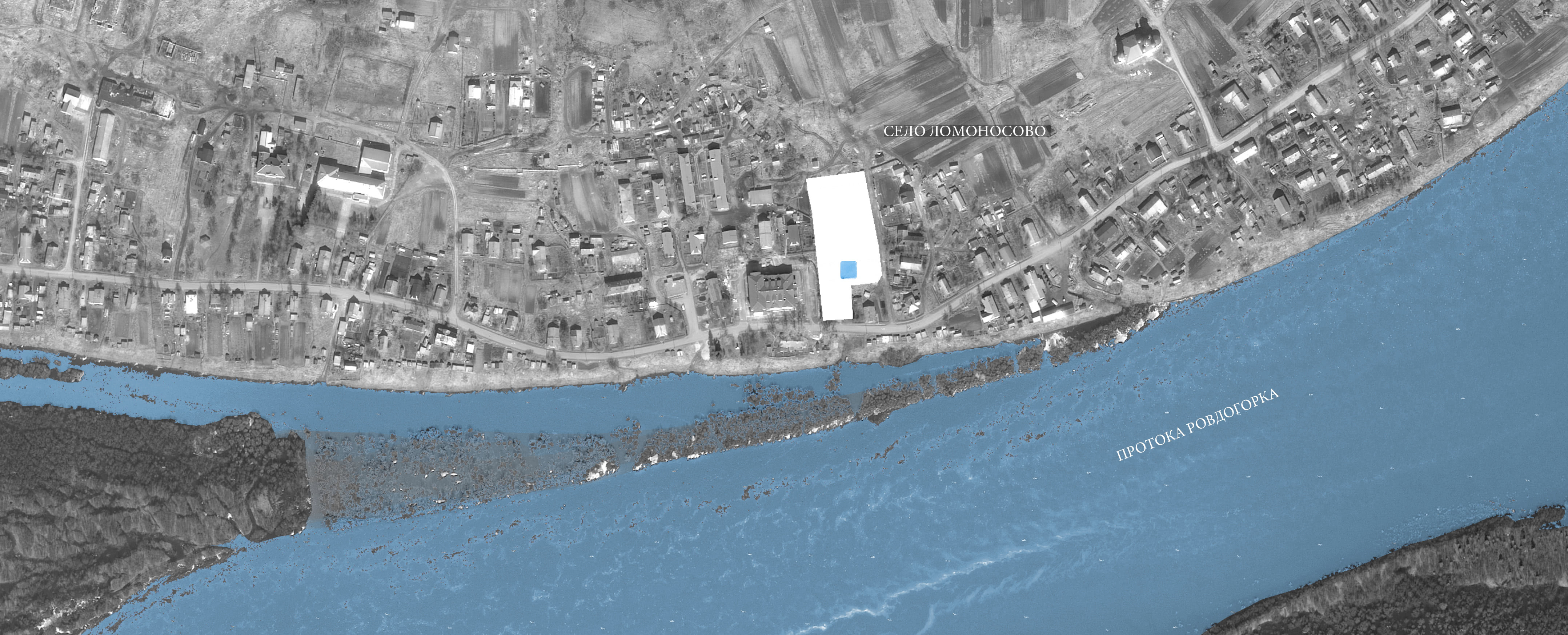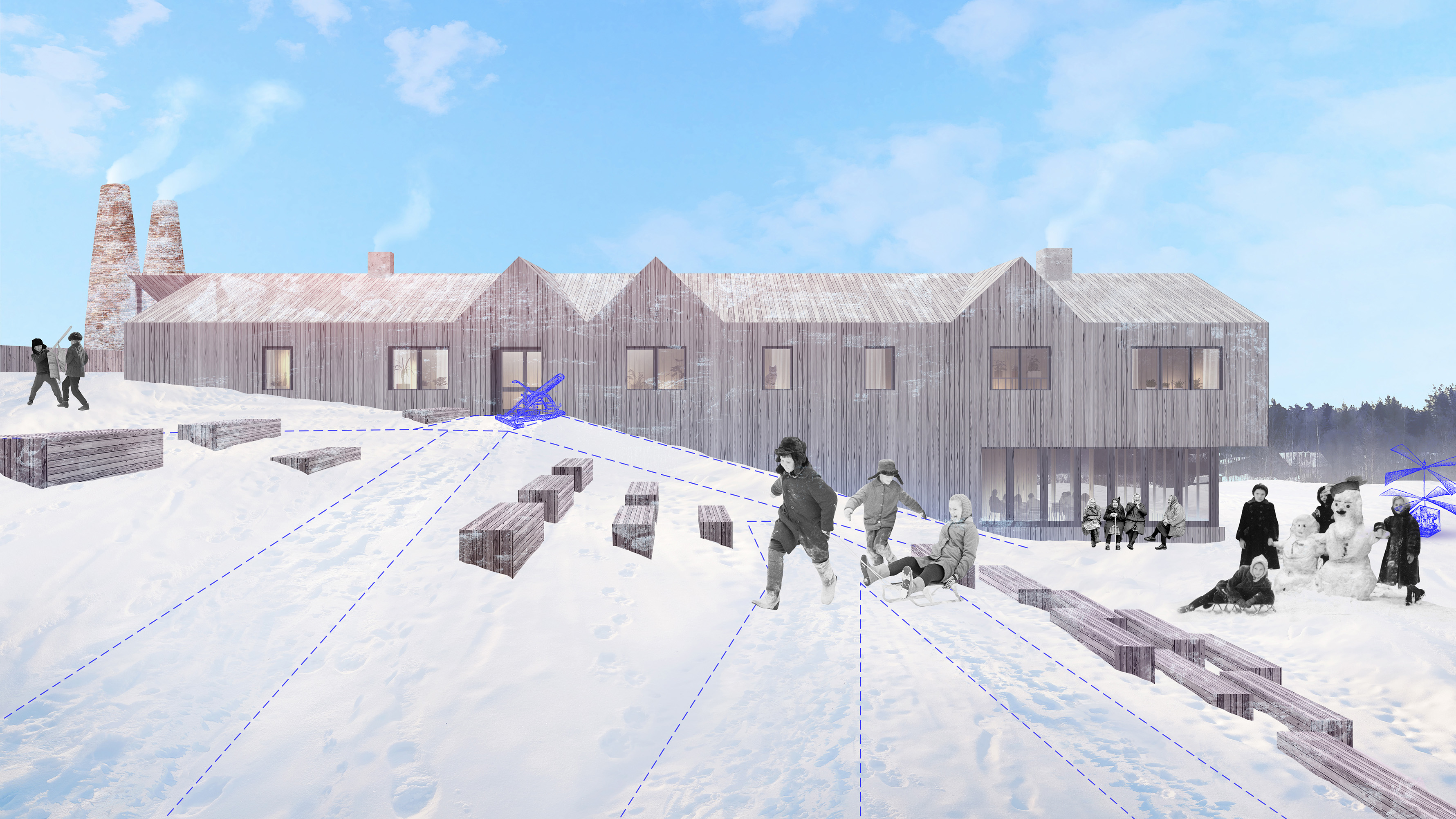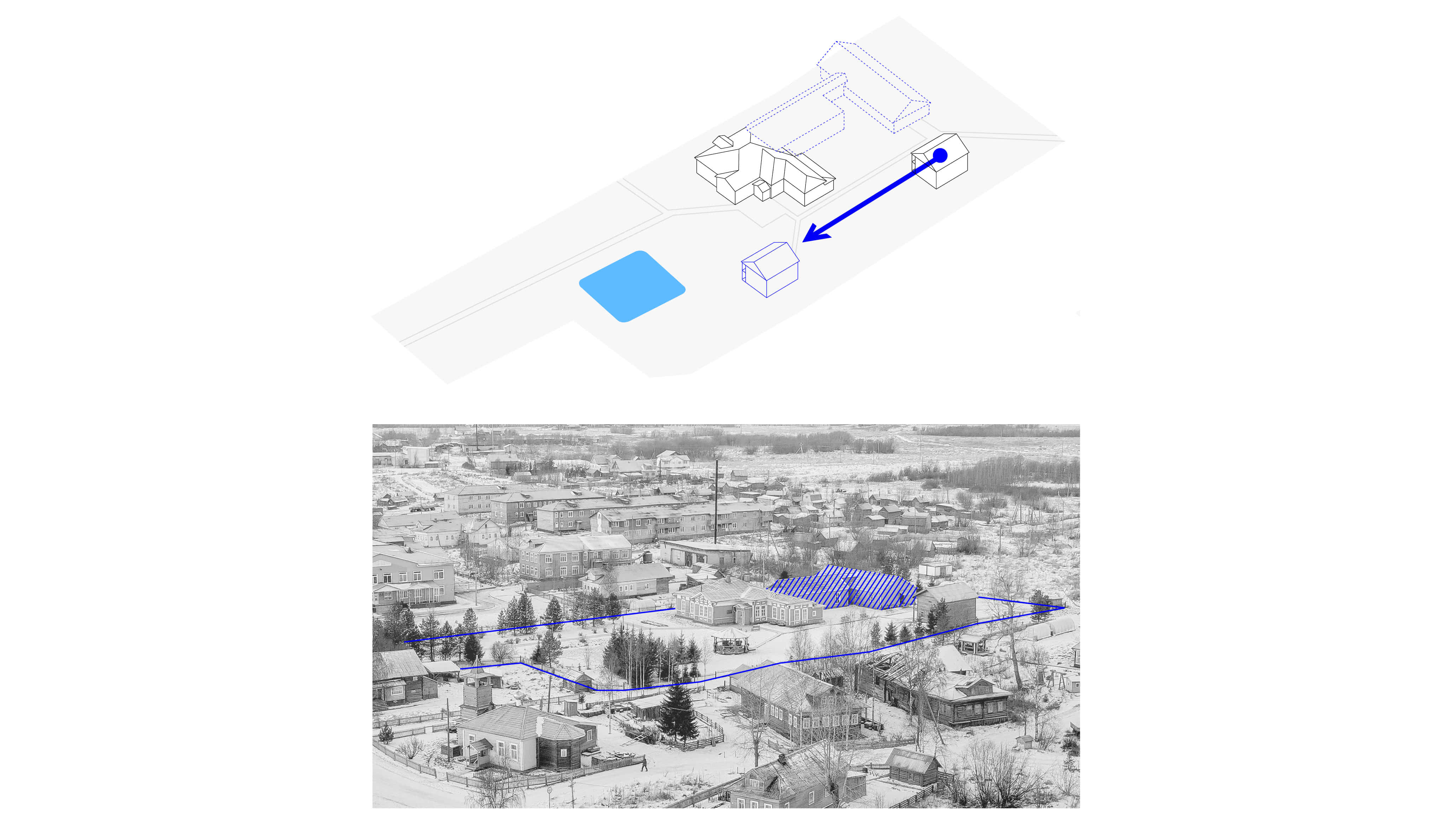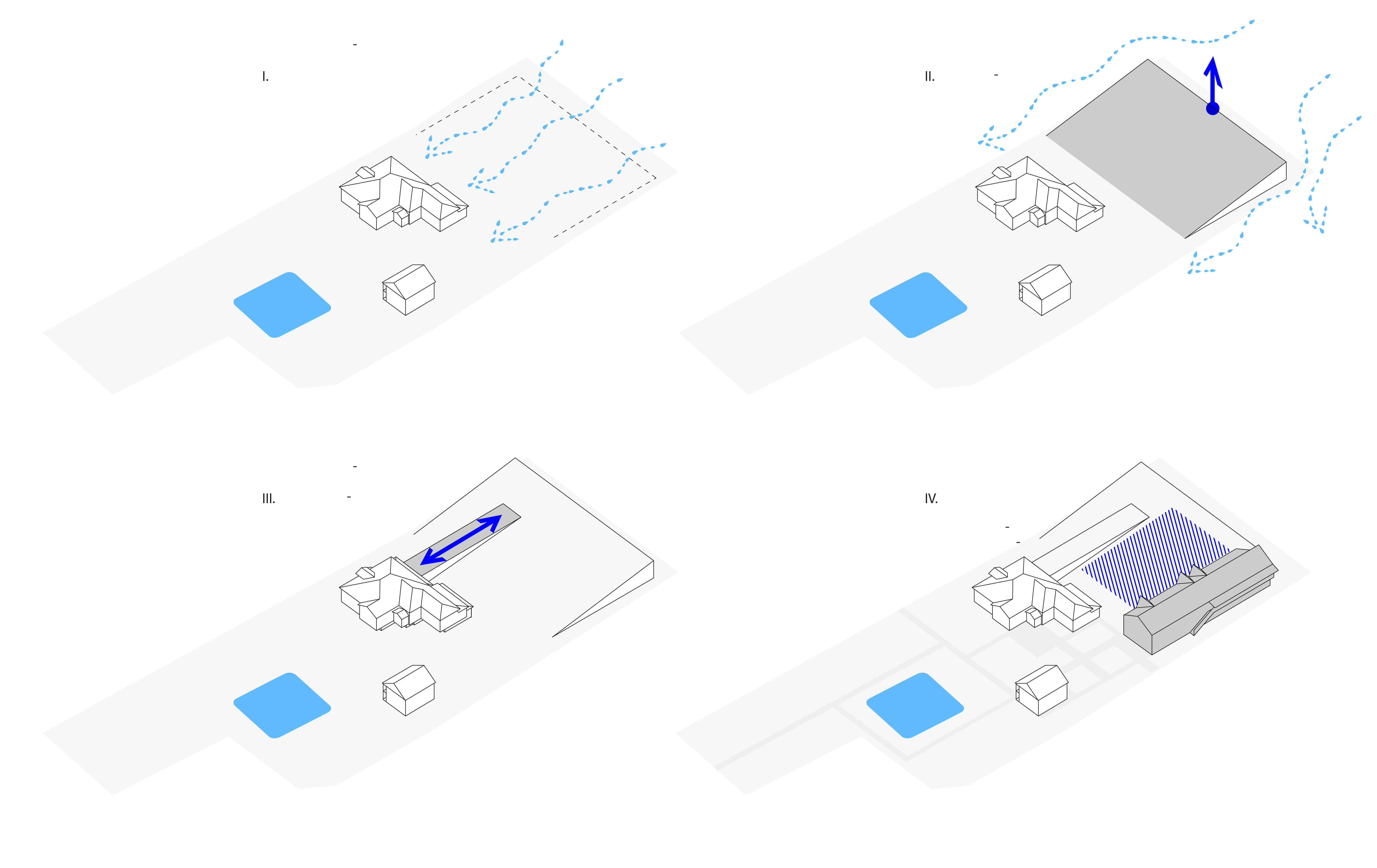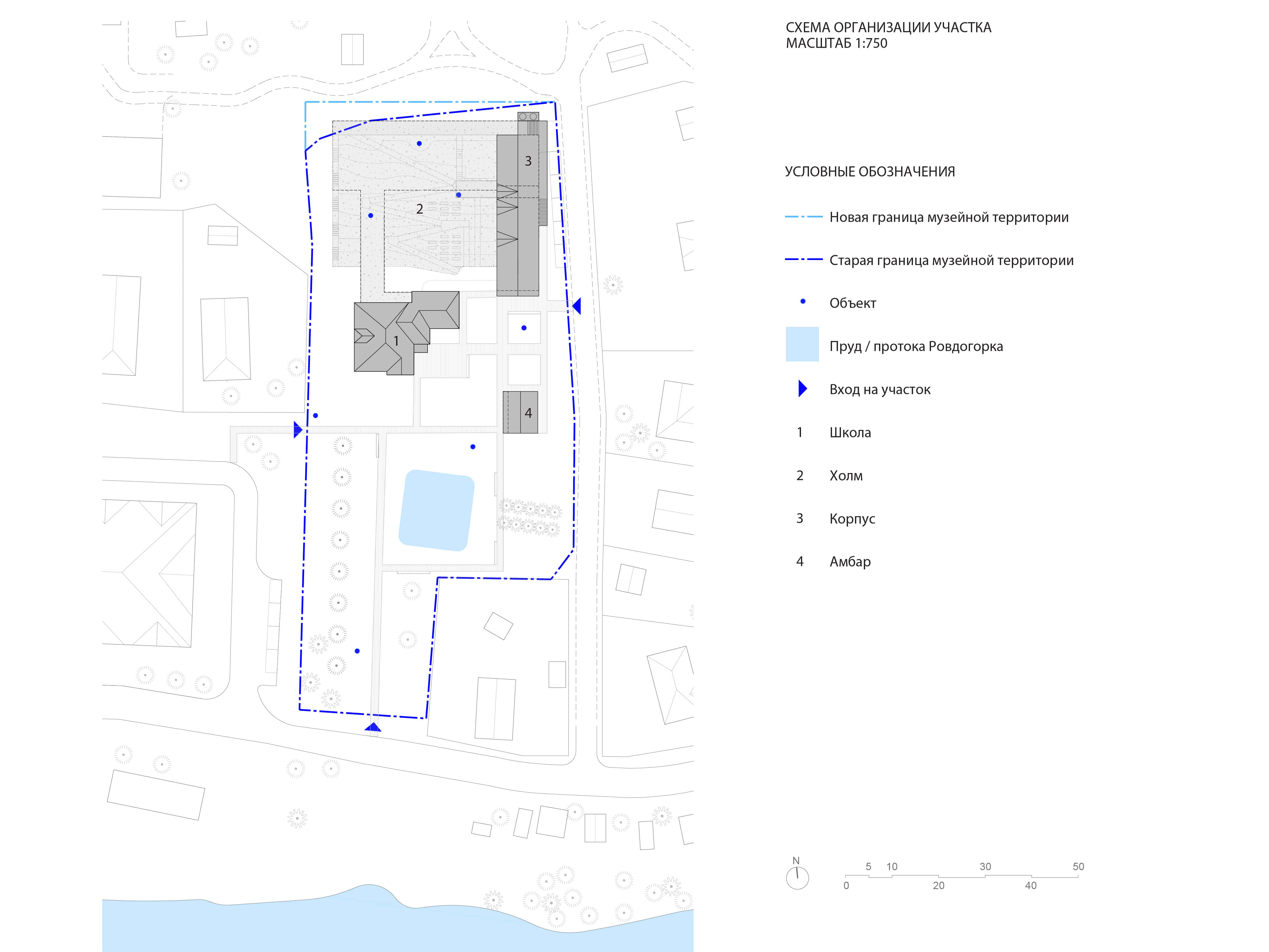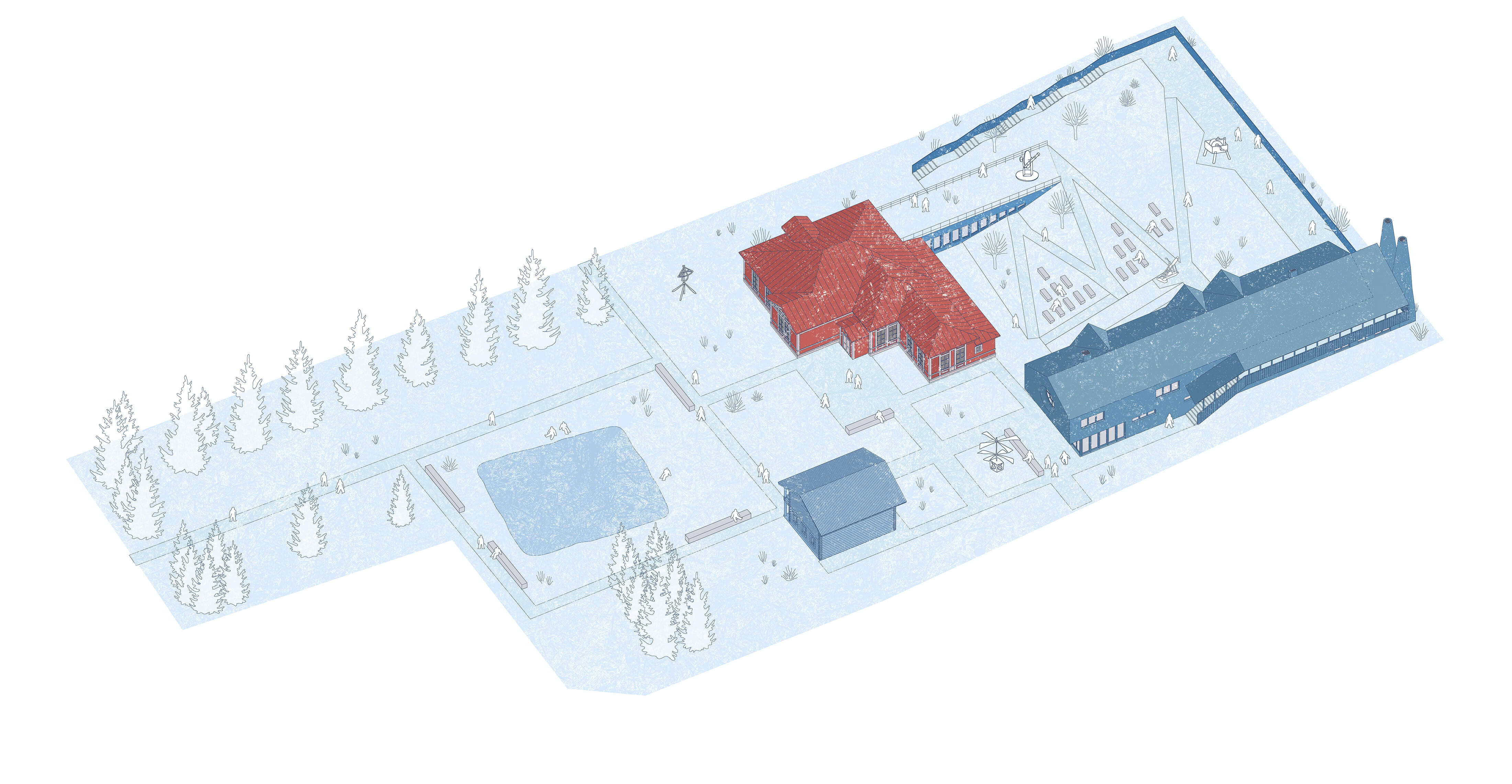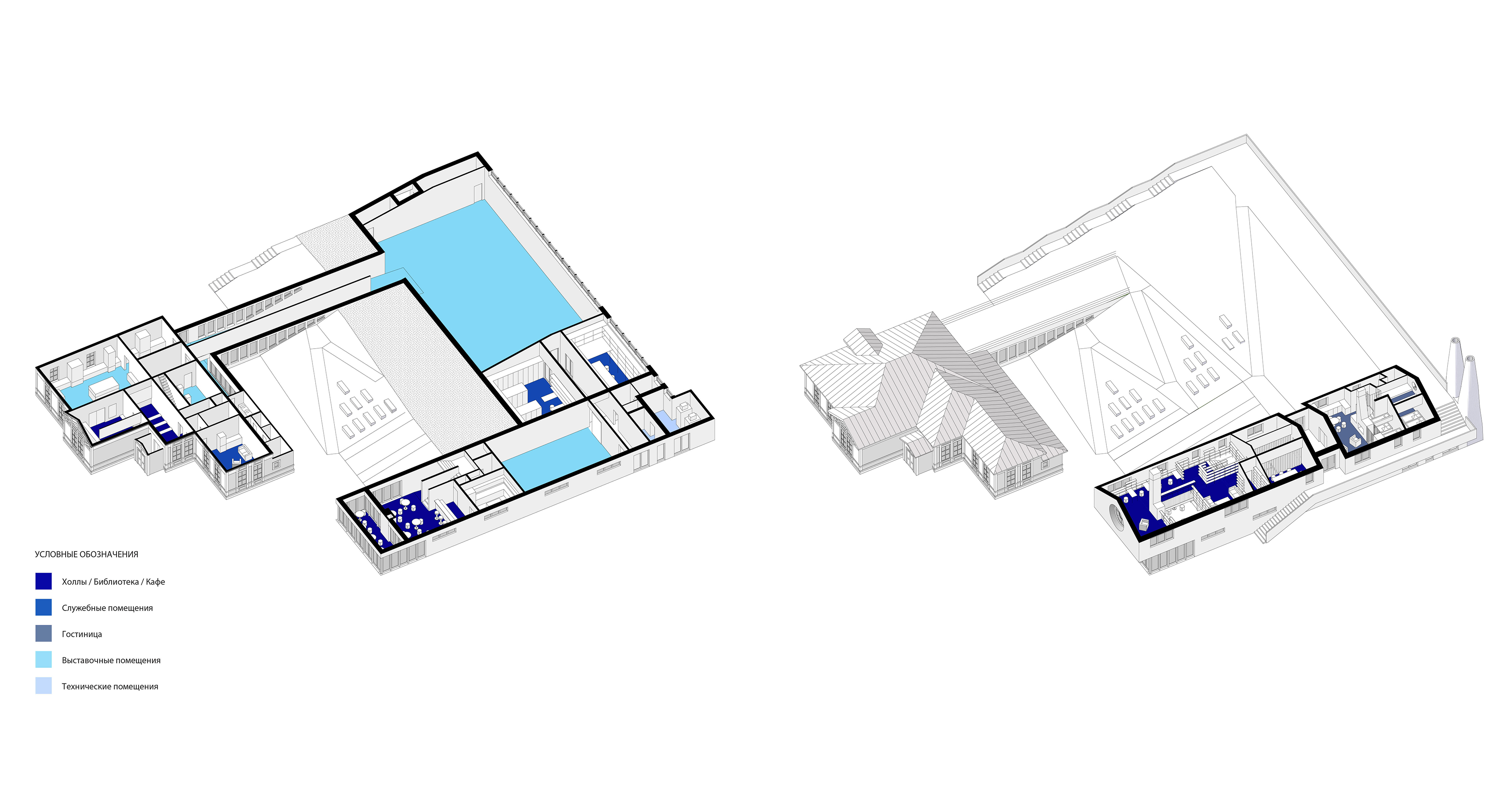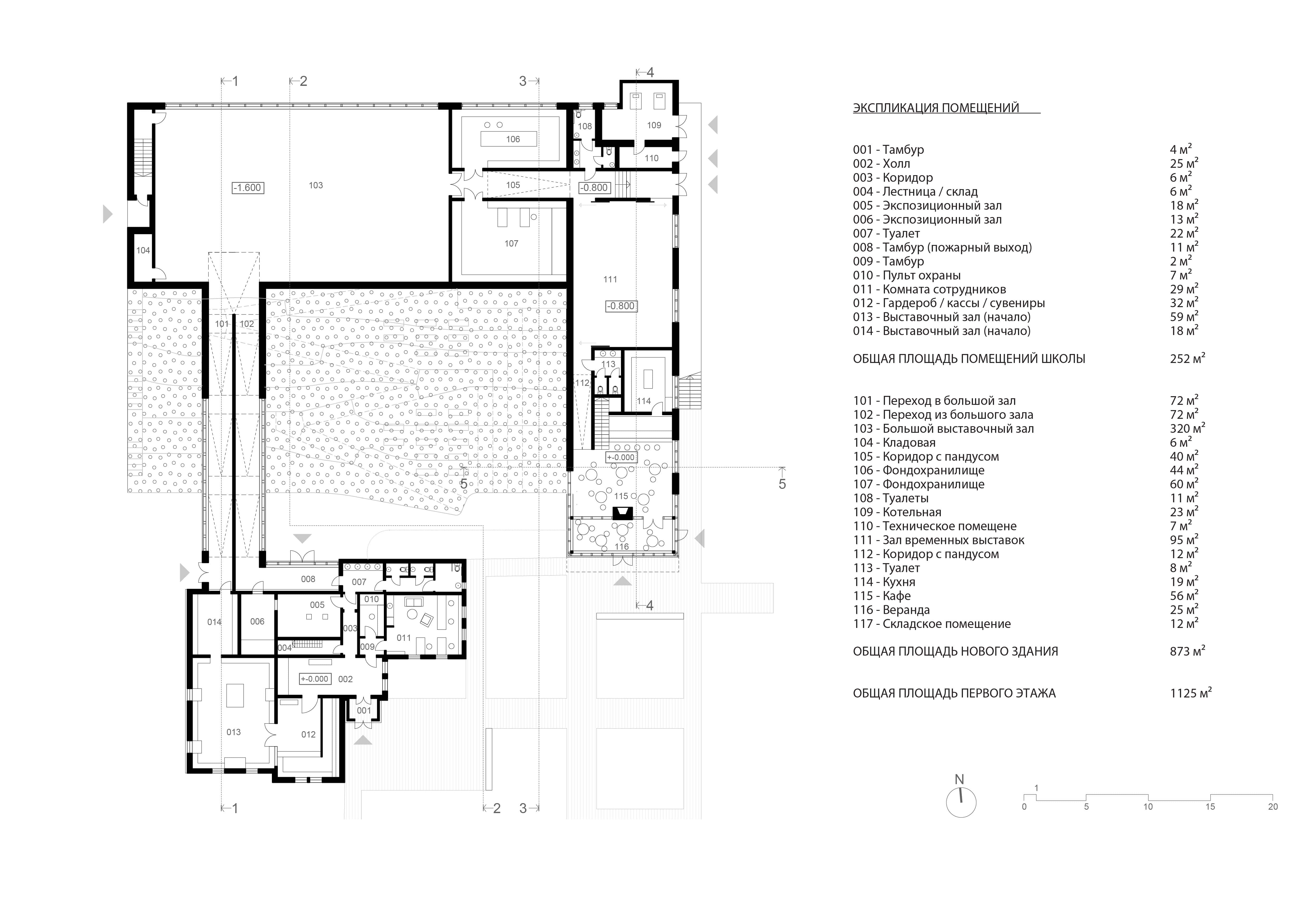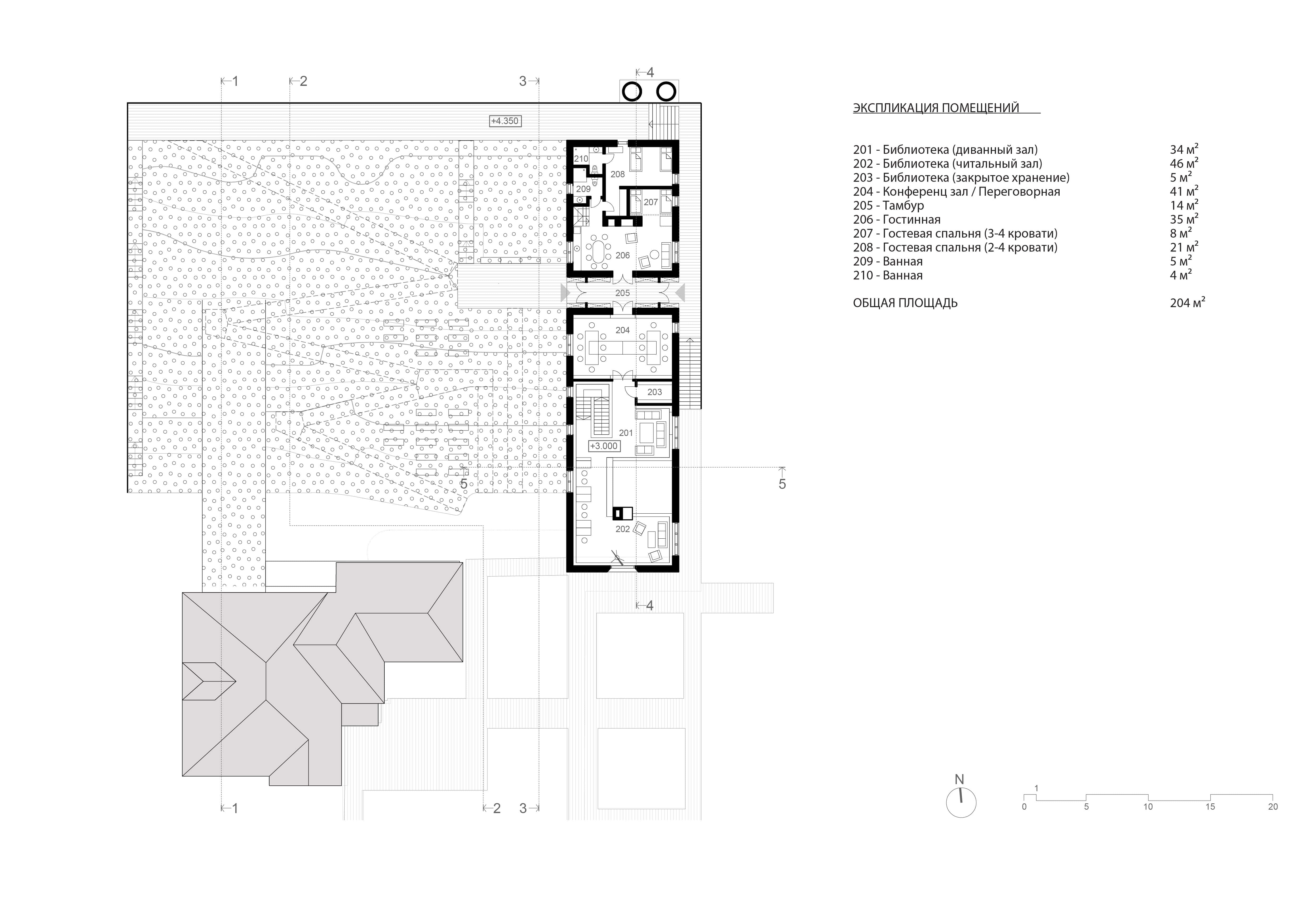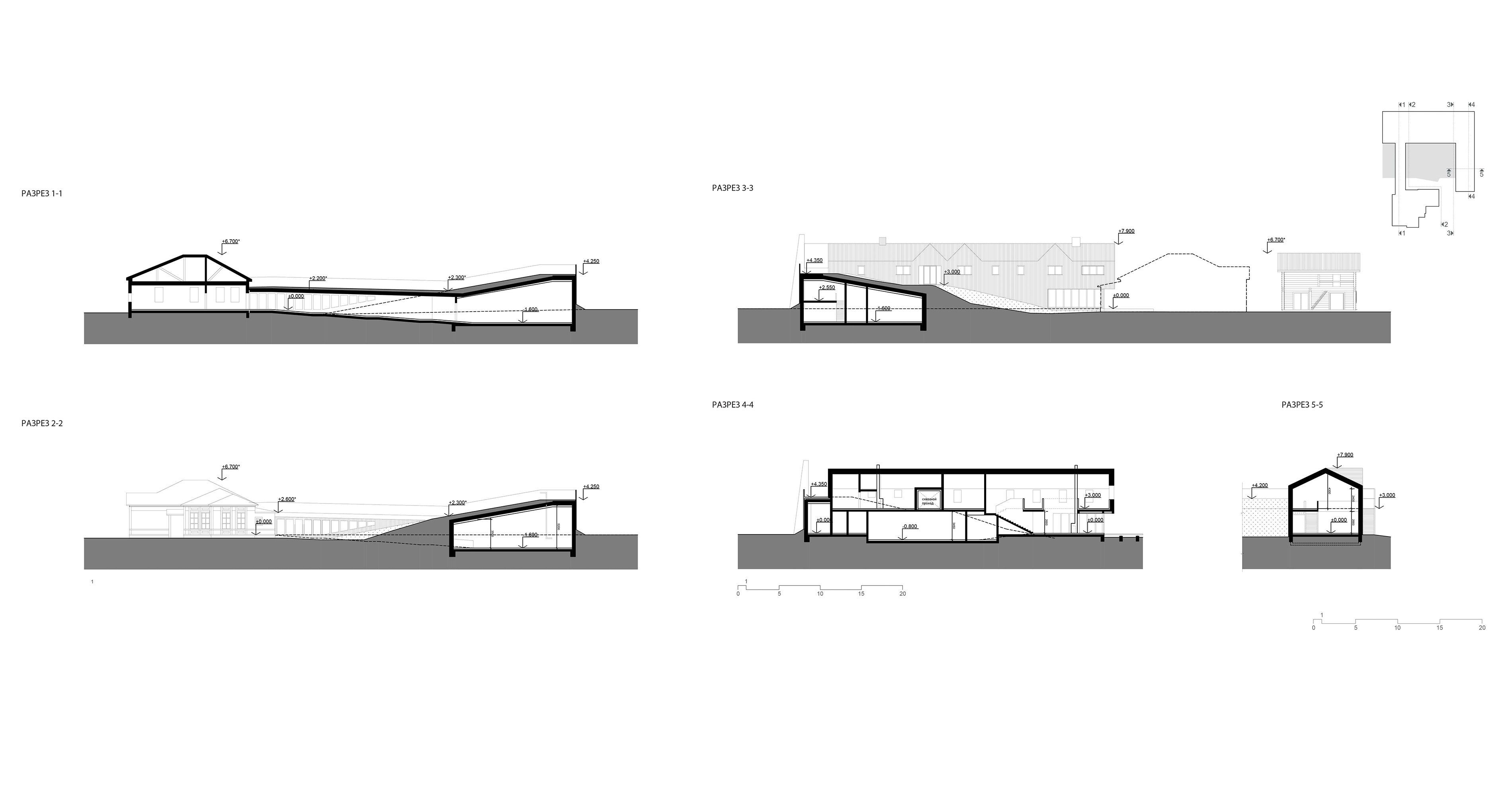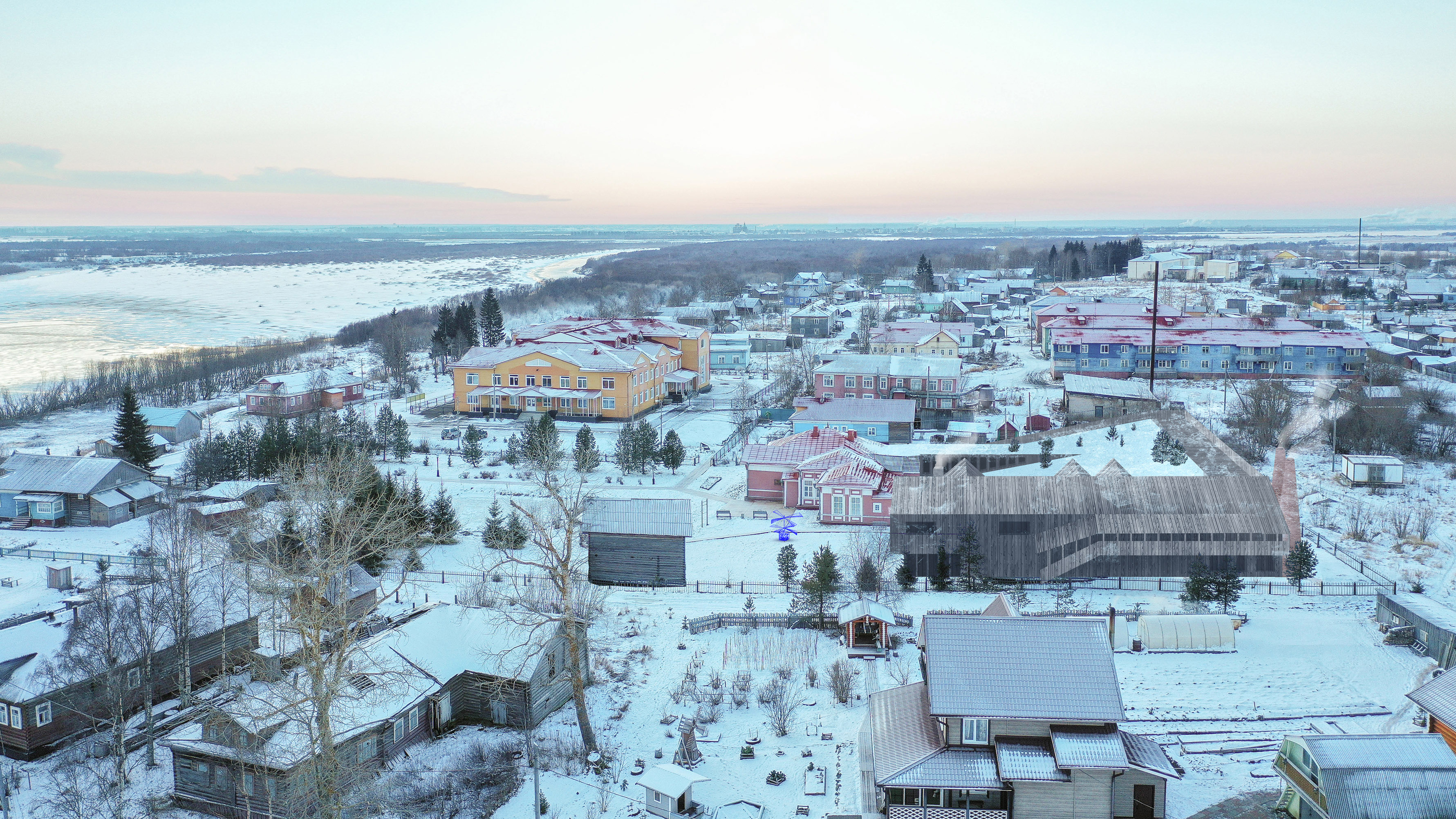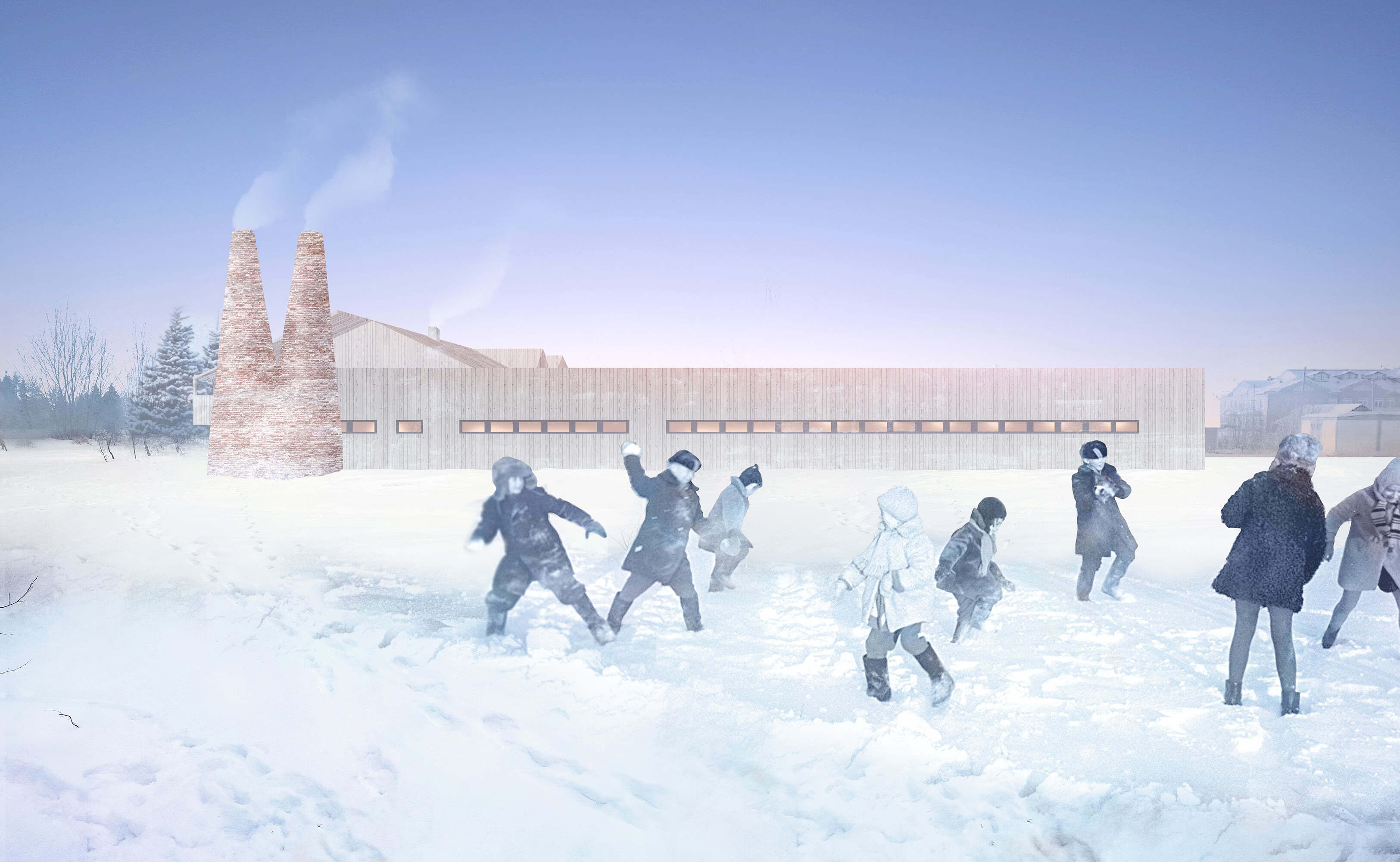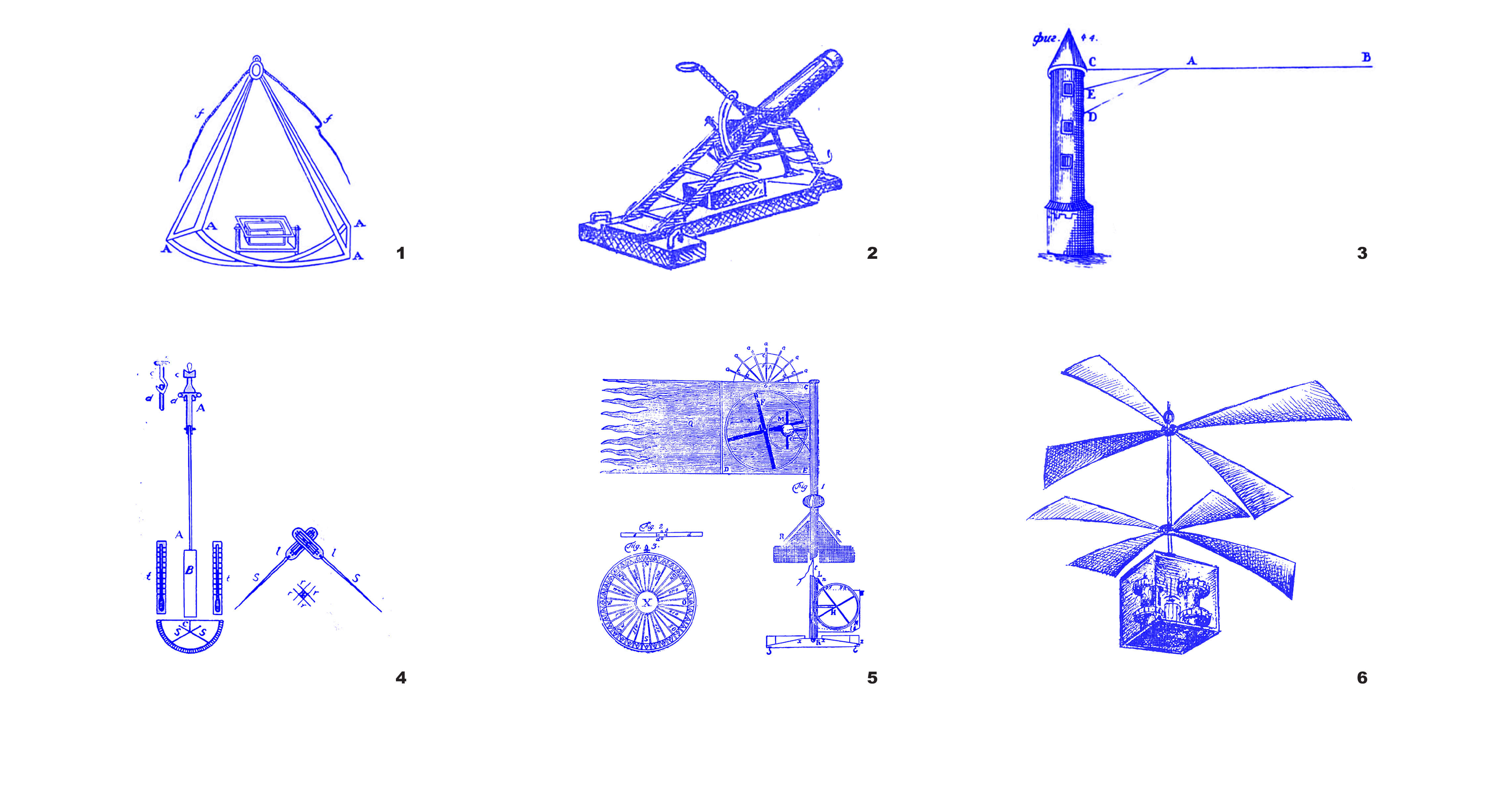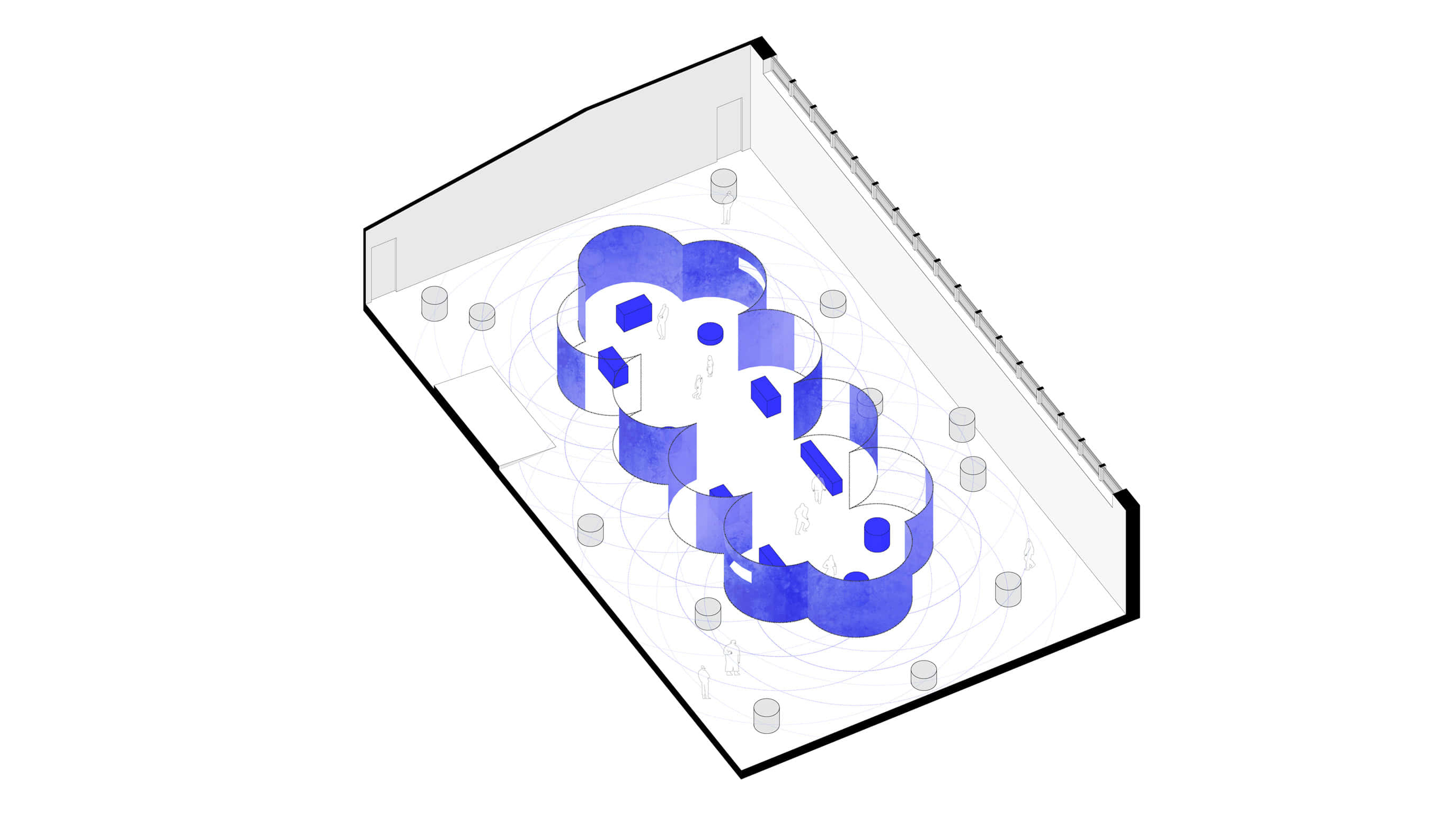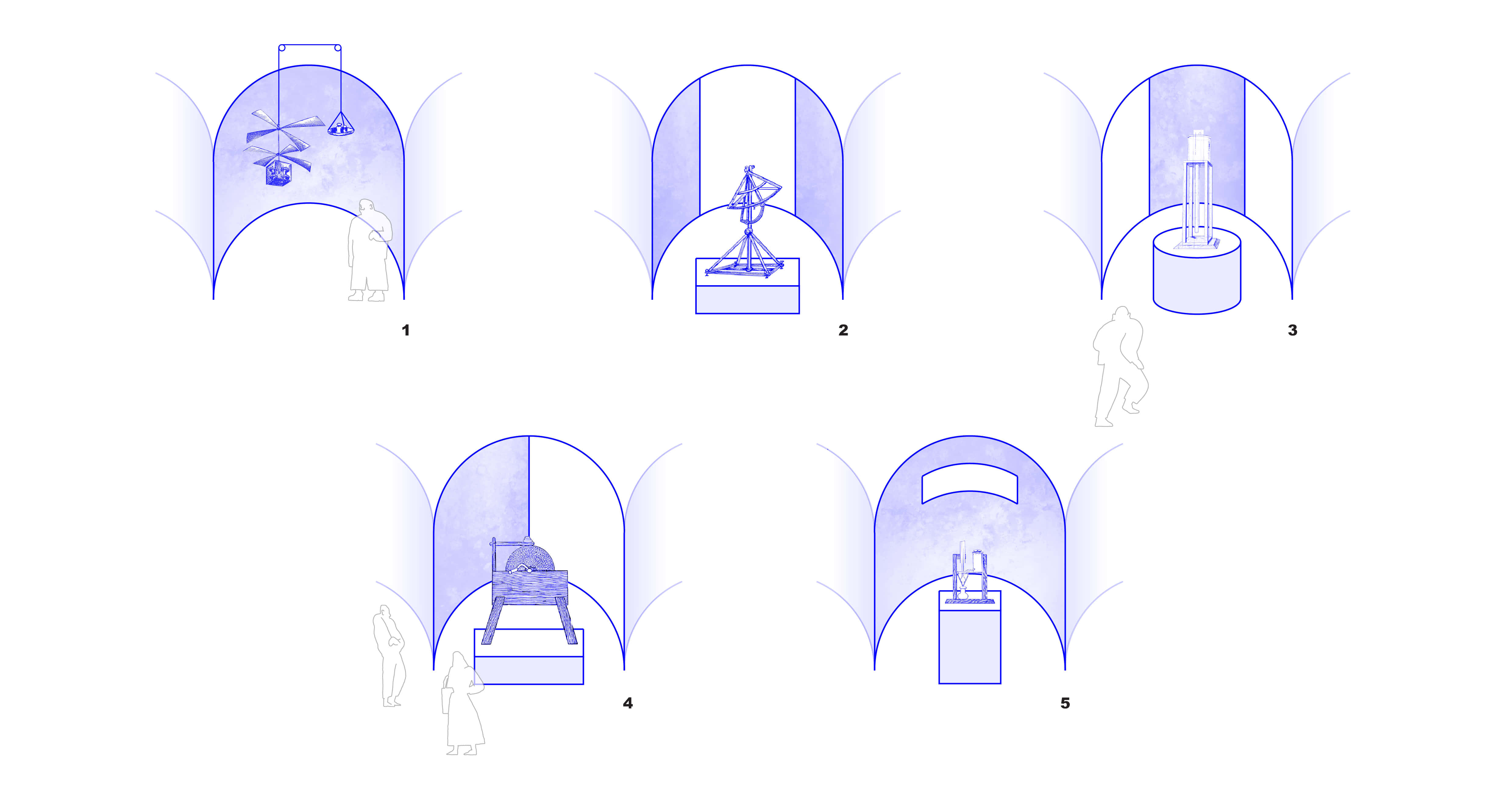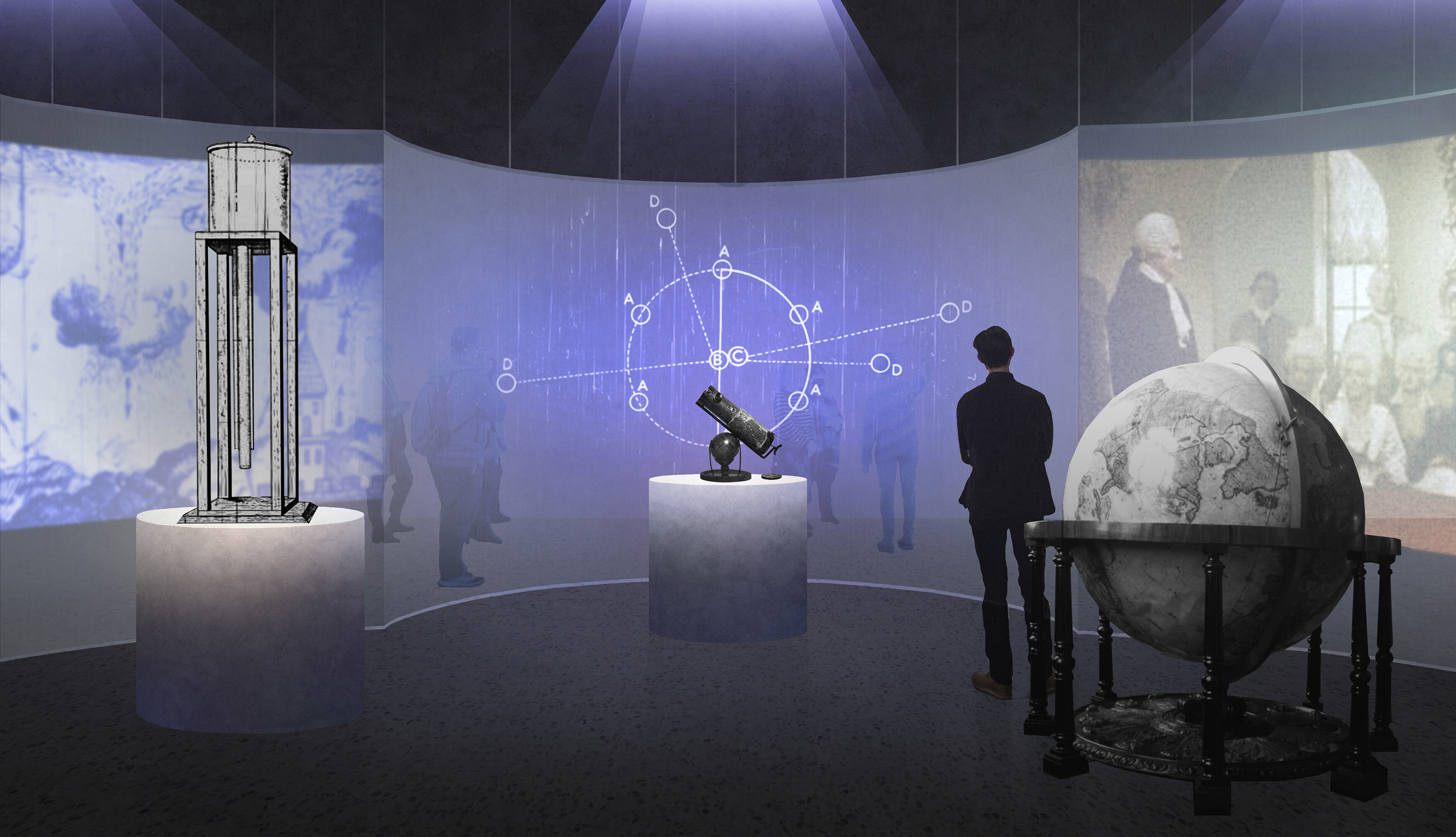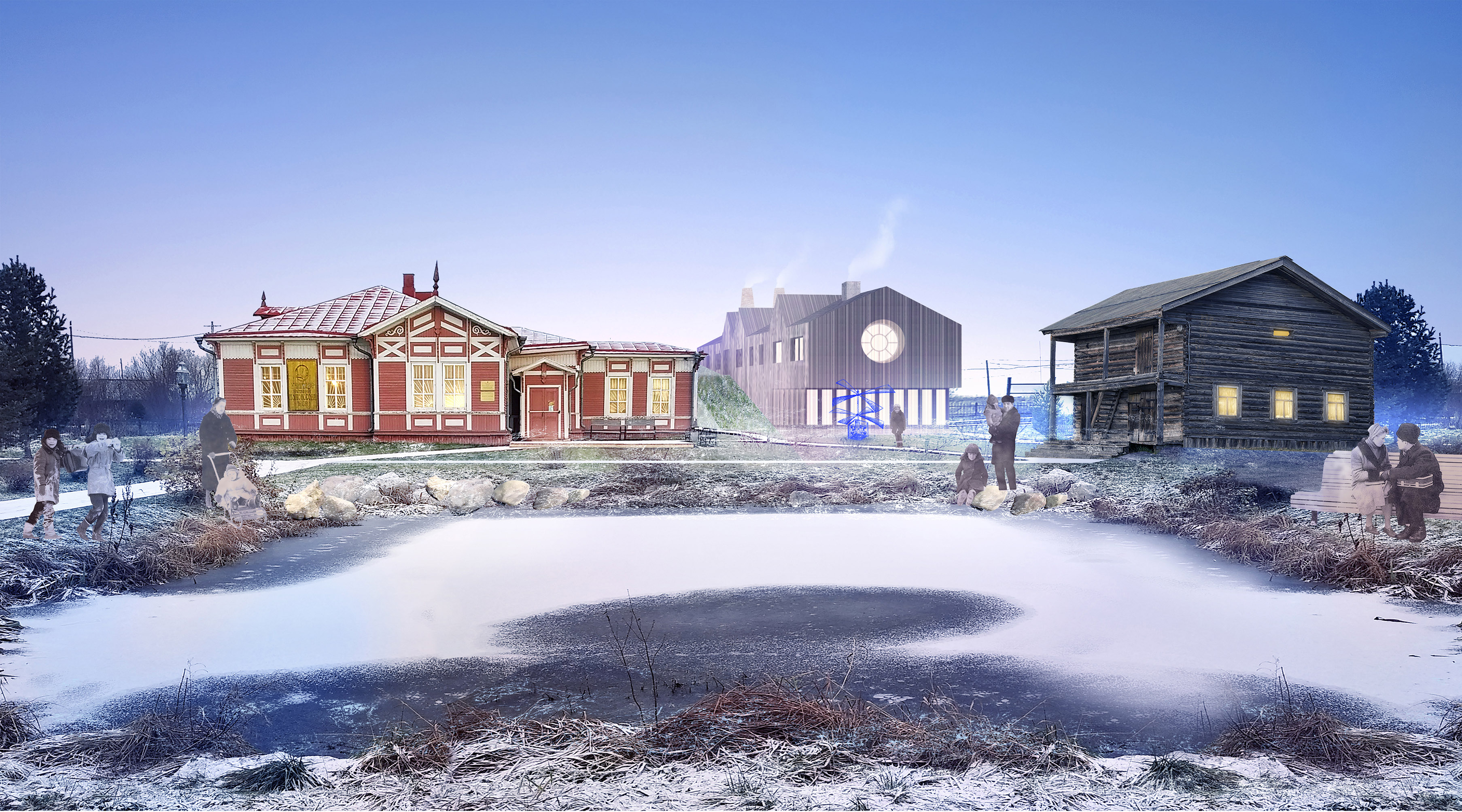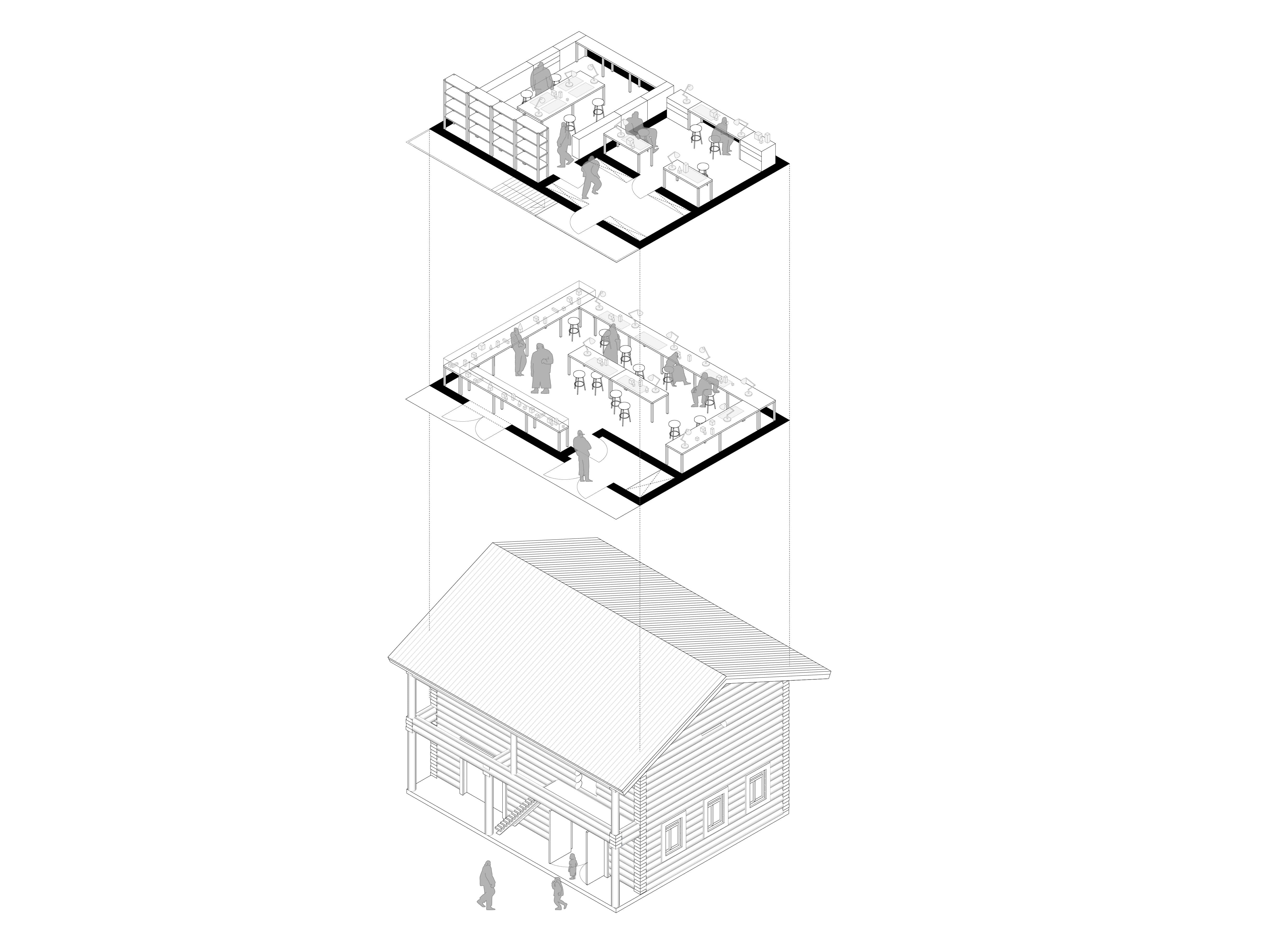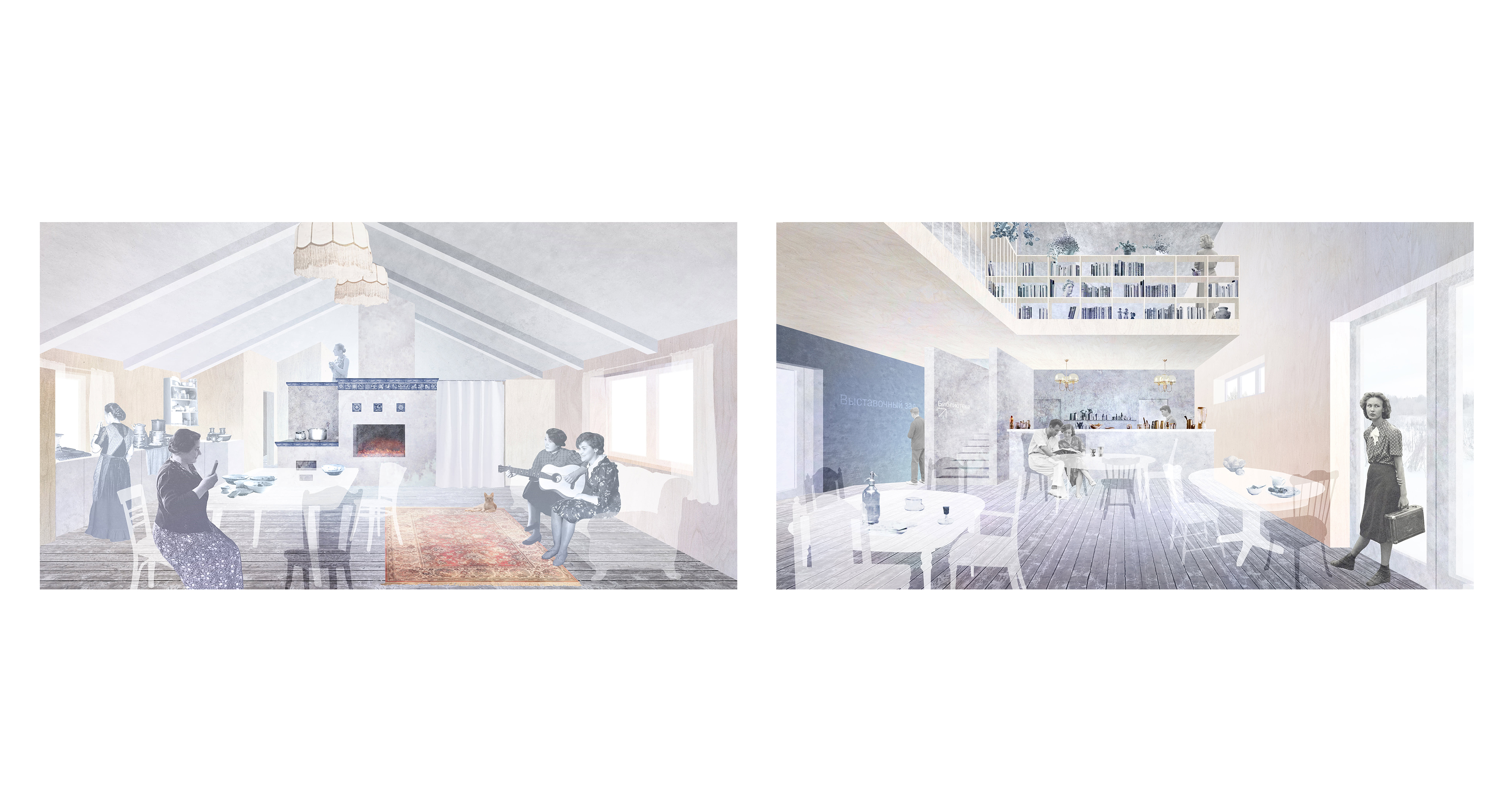The total area of the museum complex - 1420 m²
Old school building - 253 m²
New building - 1077 m²
Bone carving workshop - 90 m²
Mikhaylo Vasilyevich Lomonosov (1711-1765) was a Russian polymath, scientist and writer, who made important contributions to chemistry, physics, mineralogy, education, and literature. Among his discoveries were the atmosphere of Venus and the law of conservation of mass in chemical reactions.
Today, the Lomonosov Museum occupies the building of a former rural school (standing on the site of the Lomonosov family home) and two extremely poorly built one-story buildings of the early 2000s. Next to them is an old barn with an exposition of peasant life.
New museum appears in the bowels of the Arkhangelsk land. Preserving the existing volume of the rural school, a hill with main museum halls appears behind it.
